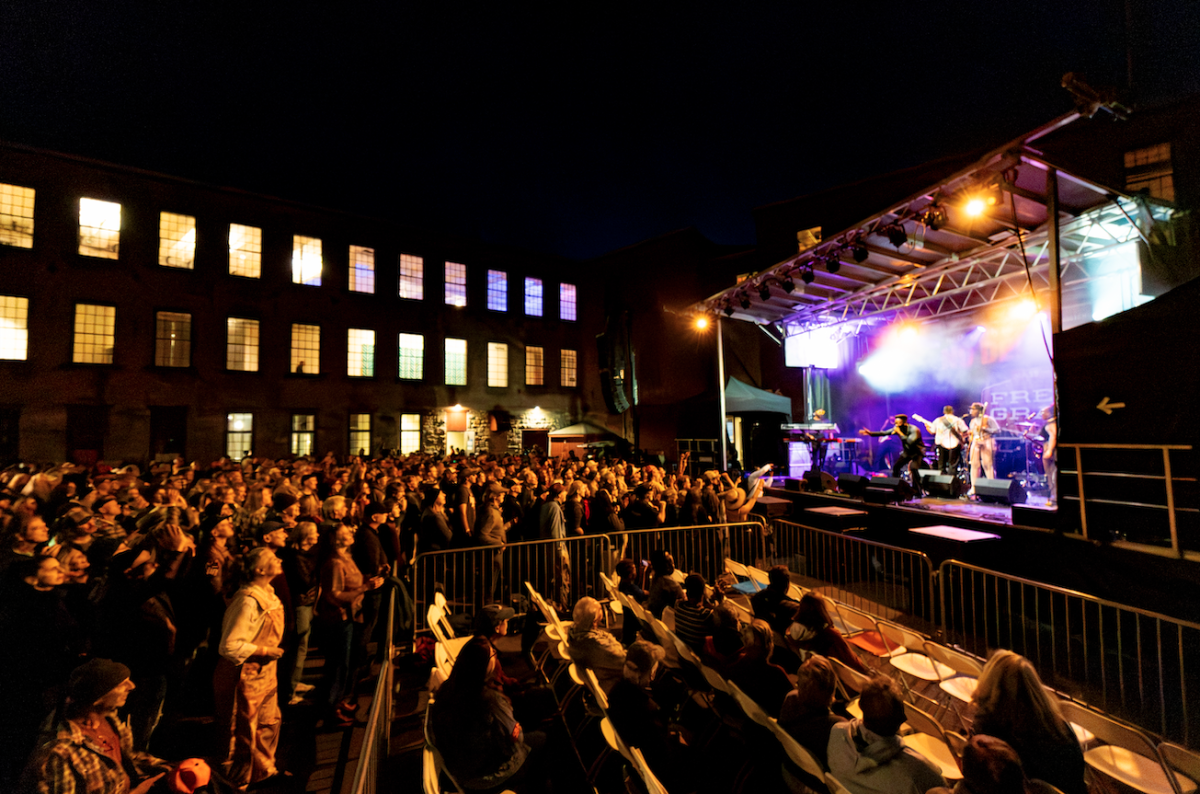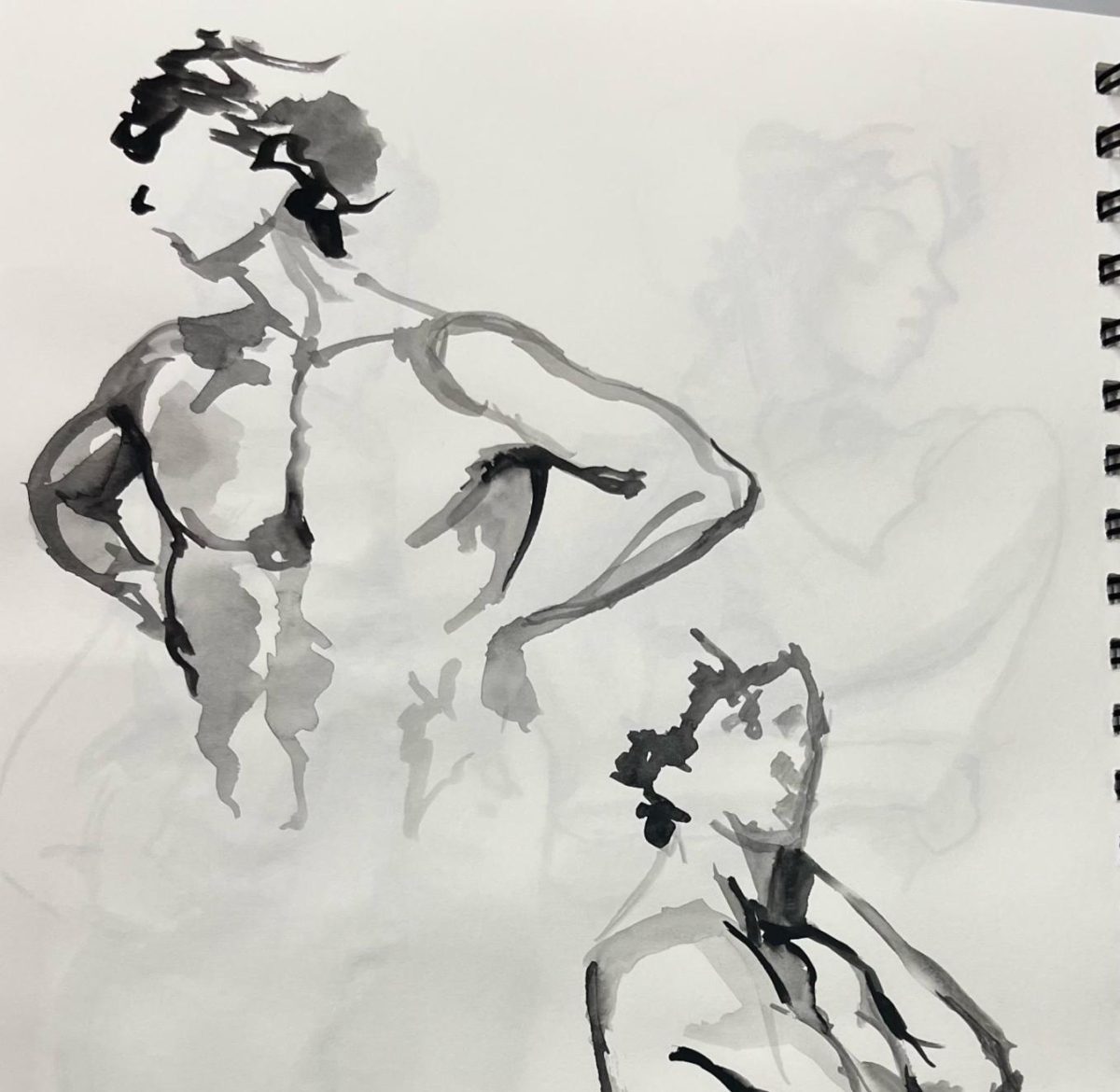
If you’re eager to check your coat and get to the bathroom before the rest of your group of museum-goers, you’ll probably miss David-Jeremiah’s “I Drive Thee,” which opened at The Clark Art Institute on Feb. 10. The exhibition’s three largest pieces are located in two of the museum’s public areas: its store entrance and the Manton Research Center. The pieces — large circular panels known as tondos — present a stark contrast to the walls on which they’re hung over museum visitors, café diners, and students.
“The idea is to activate and enliven public spaces with young, emerging artists and a mix of new and existing work,” Robert Wiesenberger, curator of contemporary projects at the Clark, said in an interview with the Record. “It’s not the first time that an artist is being given such a large platform here, but it’s definitely a priority.”
The exhibition is unique in that it is conceptual artist David-Jeremiah’s first showing outside of his home state, Texas, where he currently lives and works.
David-Jeremiah’s work in “I Drive Thee” blends traditional symbols of bullfighting with their reformation through Lamborghini’s car designs. The work’s subject matter takes on a particular meaning to the artist, as stated in his artist’s statement. He believes the two concepts share a nexus that reflects on Black masculinity in America. In the statement, David-Jeremiah writes that he portrays the “[Lamborghini] as a symbol of status and performance, [bullfighting] as a spectacle of power and persecution.”
Inspired by the tradition of bullfighting and the sleek design features of Lamborghini steering wheels, each of the tondos takes on a monochromatic representation of a component of David-Jeremiah’s artistic universe. On the lower level of the museum’s entrance, the black tondo represents valor, in contrast to its yellow counterpart — hanging within sight of the first — which represents cowardice. In the Manton Research Center, a third, orange tondo represents the victor of the bullfight. Accompanying this tondo is a multimedia installation that includes two prints, a video, and seven urns designed by David-Jeremiah. The urns contain the ashes of a fourth, “cremated,” tondo which represents the soul of the slaughtered bull.
The latter of these feels almost deceptively separate from the rest of the installation, despite being no more than 10 feet from one of the hung tondos. The prints, which depict the tondo before its cremation, seem to distance the viewer from the textural complexity of the other pieces of the same name. One appears to be a collage representing the tondo “gone fishing” — equipped with a rod, bucket hat, and freshly-caught largemouth bass. Mirroring it on the other side of the video display is another print depicting the tondo, reminiscent of early black-and-white images of the moon’s surface.
“I really admire David-Jeremiah’s practice because he combines gravitas, goofiness, and a sense of humor that’s disarming and unexpected,” Wisenberger said. “What he calls the buddy portrait … is bizarre and, I think, funny, but of course, a lot of what he’s talking about is also deadly serious, and I think that combination is rare to find and really compelling,” Wisenberger said of the “gone fishing” print.
Both prints, which take the tondo out of its usual visual representation, are grounded by the urns below them. Despite having a more distant visual connection to the tondo — modeled on the spokes of a Lamborghini wheel — these urns are physical receptacles for what the viewer sees in conflagration on the screen.
The current exhibition is set to complement an artist talk with David-Jeremiah on May 23 and the launch of a staple-bound publication of the works on display along with essays written by the artist and Wisenberger. “It is akin to an artist book in the sense that it’s experimental in form and content, and it includes a text by the artist,” Wisenberger said. The book will be the artist’s first publication and is, as Wisenberger noted, a near exact replica of a Clark publication from 1962 on its Sienese Altarpieces, a landmark acquisition, but with David-Jeremiah’s work instead. “It’ll be very old-school in appearance, but with David-Jeremiah’s very distinctive voice in it,” Wisenberger added.
The publication is intended to be more accessible than traditional exhibition publications. “It’s not a coffee table book, but rather something that’s more accessible, available, and experimental,” Wisenberger said.
“I Drive Thee” will be on display at the Clark through January 2025.








